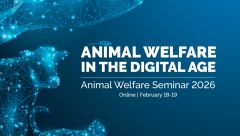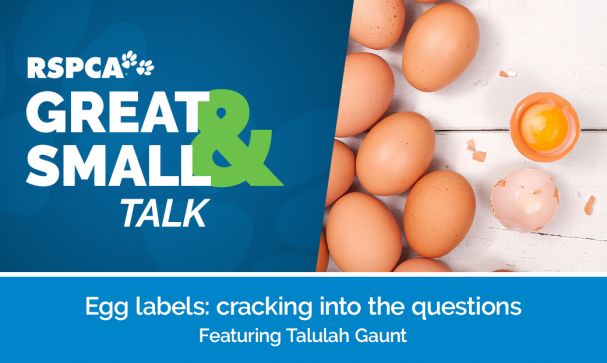We’ve been talking about layer hen welfare for a long time, and especially recently. With the long-overdue phase-out of barren battery cages pending, and conflicting information circulating in the media, layer hens and the eggs they provide remain firmly in the public’s consciousness – as they should. But beyond cages and stocking density, many of the welfare issues impacting these smart and inquisitive birds have remained largely unaddressed.
Good animal welfare goes beyond preventing pain, suffering or distress: it includes ensuring animals can express their natural behaviours and enjoy positive experiences during their lifetime. Sounds reasonable, and yet there are some significant challenges and practices inherent to egg production that counter this principle.
Inadequate environments
In Australia, layer hens are reared in either cage, barn systems, or free-range systems, and welfare can vary widely between the three. The poor welfare of caged hens is well documented, but the minimum Australian legal requirements for barn and free-range systems don’t go far enough to ensure all a hen’s physical and mental needs are met, either.
For layer hens to have a good quality of life, they need an enriched environment, with space to move freely and socialise, provisions like quality litter with enough depth to forage and dustbathe (important instinctive behaviours for hens) and places to perch that encourage movement and strengthens their bones. Aside from providing nest boxes in cage-free housing systems, provisions such as floor substrate and perches are not currently legally required in barns, nor are other forms of enrichment, and any additional provisions are at the discretion of producers. This means that without good management, for many layer hens, life inside a conventional barn may still be barren, unstimulating, robbing hens of opportunities to engage in many of the natural behaviours crucial for their wellbeing.
For free-range hens, the legal requirements for the indoor environment are essentially the same as barn-laid systems, with the main differences being access to an outdoor area with shade and shelter. There are no definite requirements for how much shade or shelter is provided, nor any specifications for making the area inviting to encourage hens to use it. Again, these variables are at the discretion of producers, meaning some farms might maintain a very high standard of welfare for their birds while others achieve only the bare legal minimum – and with little way for the conscious consumer to know the difference.
Beak trimming
Beak trimming is an invasive procedure performed on layer hens where the tip of the beak is removed with either infrared (preferred) or a hot blade. It’s the main method used to control the impacts of feather pecking which can occur in both commercial and smaller flocks, and which can cause serious injury to birds. Beak trimming is most often carried out at the hatchery within the hen’s first 24 hours of life, and if performed without pain relief, can cause stress and acute and chronic pain.
There’s been global support for a phase out of beak trimming, and several European countries have managed to do this successfully; however, they’ve had significantly fewer layer hens, who were usually kept in smaller flocks. At this stage, the current reality of egg production in Australia means beak trimming is viewed as the most effective and easily implemented option available to prevent and manage injurious feather-pecking outbreaks, which also have serious animal welfare consequences for layer hens (such as injury and death).
Although it’s important to manage and prevent severe feather pecking outbreaks, the over-reliance on beak trimming within the industry is a problem, due the negative impact the procedure has on hens. The industry as a whole needs to move away from beak trimming and implement alternative management strategies instead, such as reducing stocking densities and flock sizes, improvement of environmental enrichment and provisions, and selecting genetic strains of birds less inclined to perform feather pecking.
While these strategies may require more time and resources for producers, the animal welfare benefits should make them a priority.
Culling of male chicks
Male chick culling is a serious issue in egg production, that concerns many Australians. As they’re unable to lay eggs, male chicks are unfortunately considered an unwanted by-product of egg production and are therefore euthanised shortly after hatching using carbon dioxide gassing or maceration. While both options are not pleasant to think about, maceration is considered the more humane method as when done correctly - chicks are slaughtered in a second, whereas gassing can result in more prolonged suffering.
Of course, euthanising any animal on the merit of their usefulness is not a practice that should be continued, when alternatives are being developed. New technologies have demonstrated that gender determination of eggs is possible during the first few days of egg incubation and would allow male chick eggs to be removed and used for other purposes without the need for culling. These emerging technologies are providing commercially viable alternatives to male chick culling and continued innovation will mean there can be a strong uptake within the egg industry. The RSPCA continues to urge the egg industry to invest in gender determining technologies to spare male chicks the potential pain and suffering caused by the current methods and end the practice for good.
What can the RSPCA do about these issues?
There are numerous animal welfare issues inherent to animal agriculture and some of these are so entrenched that to address them effectively is a long-term challenge, with many incremental steps needed to move industry practices towards an overall goal. Some aversive procedures – such as beak trimming – are undertaken to address other animal welfare issues; so while they shouldn’t be continued indefinitely, there could be serious animal welfare consequences if they’re phased out without an appropriate (better) alternative or solution.
The RSPCA is working actively towards advancing farmed animal welfare through a multi-tiered approach - at government level through our policy work; at the community level through our education and advocacy work; and alongside farmers and the agriculture sector through the RSPCA Approved Farming Scheme.
Developed to help progress solutions to welfare issues in Australian farming, the RSPCA Approved Farming Scheme’s mission is to improve the quality of life for farmed animals, with the vision of a future of higher-welfare farming. To realise this goal, animal-specific standards have been developed, that serve as a guide for higher-welfare farming, while still being feasible for producers to implement and remain commercially viable. Layer hens are one of the six farmed animal types included in the Scheme, and by working together with egg producers and industry stakeholders, the RSPCA has been able to address some of the key issues like ensuring enriched environments with all the provisions hens need for good quality of life.
Some issues require a larger industry shift and cooperative efforts from multiple parties, and therefore, are not matters that either the RSPCA or its Approved Farming Scheme can solve right now. These include, for example, the welfare of birds in hatcheries, pullet rearing, beak trimming, or the slaughter of layer hens at the end of their lives.
But that doesn’t mean we aren’t working towards them. Our recently revised RSPCA Approved Layer Hen Standard has implemented changes that work towards our overall vision of higher-welfare farming and include requirements for management strategies that work towards phasing out beak trimming, improvements to environmental provisions and enrichment, and other husbandry practices.
In the meantime, one of the most meaningful ways ensure we can ensure better layer hen welfare, is to work with producers to implement provisions and practices that cater for their hens physical and behavioural needs, while engaging with industry stakeholders to work towards viable alternatives for practices in need of phasing out. By taking this approach we can move closer to our goal of making impactful improvements that benefit as many layer hens as possible now, while setting the foundation for more ambitious changes going forward.










